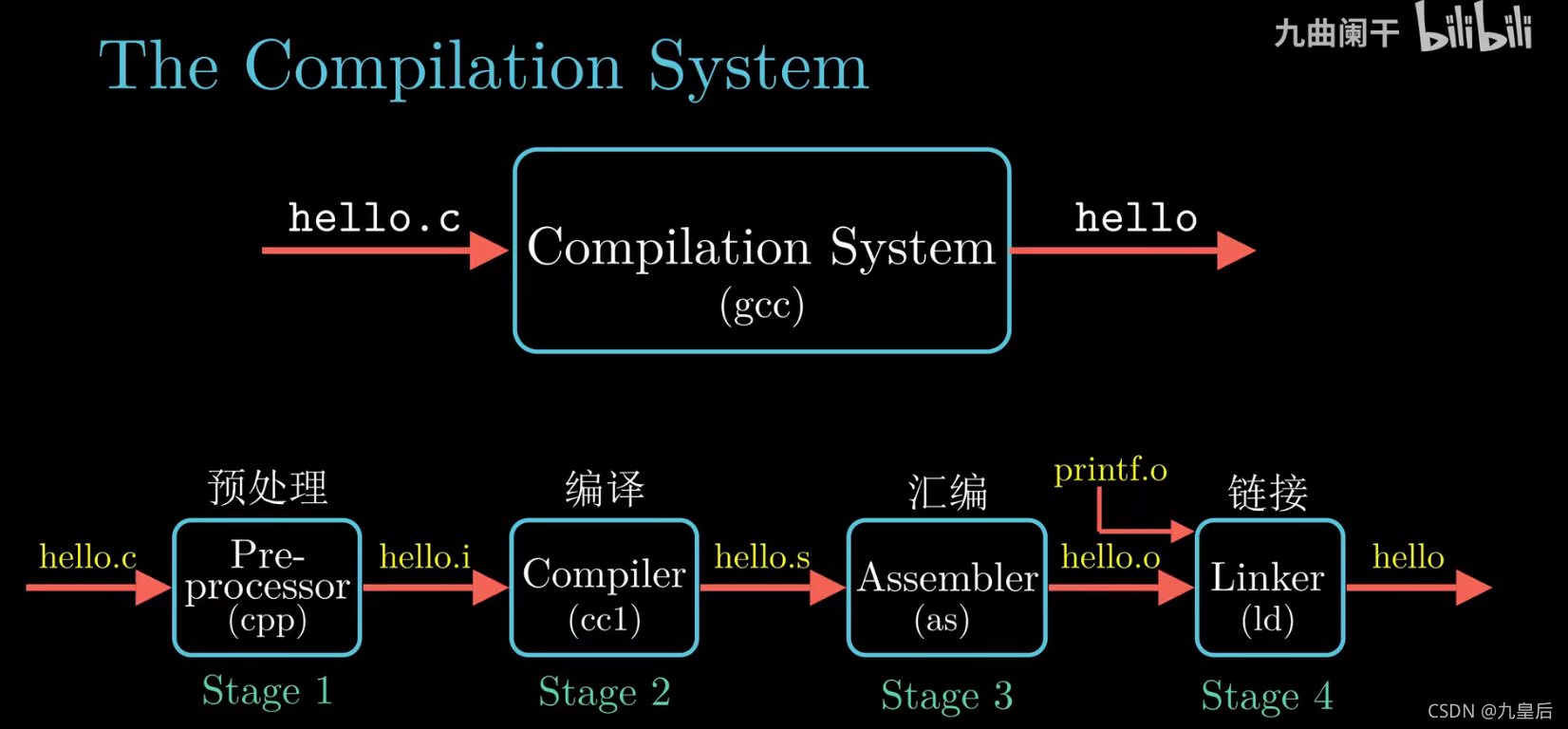1 前言
C语言程序从源代码到二进制行程序都经历了那些过程?本文以Linux下C语言的编译过程为例,讲解C语言程序的编译过程。
编写hello world C程序:
// hello.c
#include <stdio.h>
int main(){
printf("hello world!\n");
}
编译过程只需:
$ gcc hello.c -o hello # 编译
$ ./hello # 执行
hello world!
上述gcc命令其实依次执行了四步操作:1.预处理(Preprocessing), 2.编译(Compilation), 3.汇编(Assemble), 4.链接(Linking)。

2 实验步骤
2-1,预处理(Preprocessing)
预处理用于将所有的#include头文件以及宏定义替换成其真正的内容
google@google-virtual-machine:~/myTest/02linux_compiler/01helloworld$ gcc -E hello.c -o hello.i
2-2.编译(Compilation)
这里的编译不是指程序从源文件到二进制程序的全部过程,而是指将经过预处理之后的程序转换成特定汇编代码(assembly code)的过程
google@google-virtual-machine:~/myTest/02linux_compiler/01helloworld$ gcc -S hello.i -o hello.s
2-3.汇编(Assemble)
汇编过程将上一步的汇编代码转换成机器码(machine code),这一步产生的文件叫做目标文件,是二进制格式。gcc汇编过程通过as命令完成
google@google-virtual-machine:~/myTest/02linux_compiler/01helloworld$ gcc -c hello.s -o hello.o
2-4.链接(Linking)
链接过程将多个目标文以及所需的库文件(.so等)链接成最终的可执行文件(executable file)
google@google-virtual-machine:~/myTest/02linux_compiler/01helloworld$ gcc hello.o -o hello //本实验采取此方法
或者ld
/usr/bin/ld
-static /usr/lib/crt1.o /usr/lib/crti.o /usr/lib/gcc/x86_64-pc-linux-gnu/9.3.0/crtbeginT.o
-L /usr/lib/gcc/x86_64-pc-linux-gnu/9.3.0
-L /usr/lib -L /lib hello.o
--start-group -lgcc -lgcc_eh -lc --end-group /usr/lib/gcc/x86_64-pc-linux-gnu/9.3.0/crtend.o /usr/lib/crtn.o
-o hello
2-5 ELF查看信息
全称 “Executable and Linkable Format”,即可执行可链接文件格式,目前常见的Linux、 Android可执行文件、共享库(.so)、目标文件( .o)以及Core 文件(吐核)均为此格式。
readelf -S hello
2-6 objdump 反汇编输出到指定文件
objdump -d <file(s)>: 将代码段反汇编;
objdump -S <file(s)>: 将代码段反汇编的同时,将反汇编代码与源代码交替显示,编译时需要使用-g参数,即需要调试信息;
objdump -S -D hello > hello.txt

3 参考文档
https://zhuanlan.zhihu.com/p/44408605
Gcc 编译的背后 https://www.kancloud.cn/kancloud/cbook/68997
objdump(Linux)反汇编命令使用指南
【合集】CSAPP-深入理解计算机系统 https://www.bilibili.com/video/BV1cD4y1D7uR?p=13